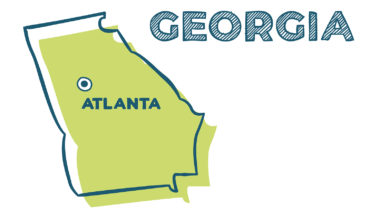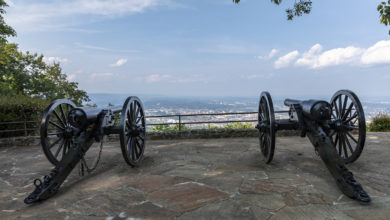Take a Sunday Drive and Be Inspired by These Old Churches
7 historic churches in rural Georgia
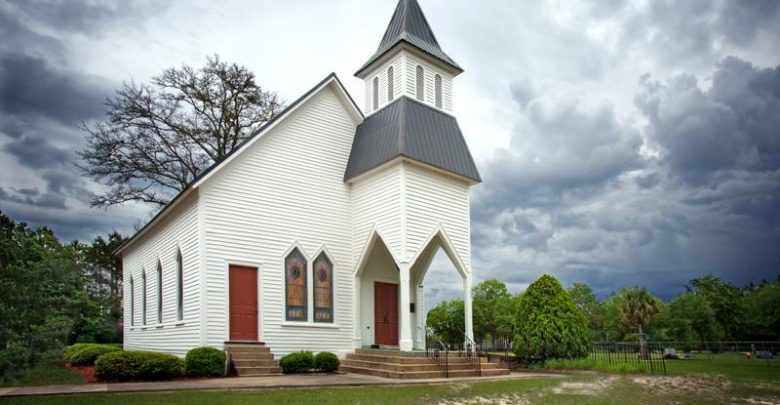
“Come to the church in the wildwood / Oh, come to the church in the vale.
No spot is so dear to my childhood / As the little brown church in the vale.”
These lyrics, written by Dr. William S. Pitts in 1857, are from a hymn that tells about a church of great meaning and value to the lyricist. The words say the church is little and surely Dr. Pitts would be surprised by the size of some of the country’s churches today. I wonder if he drew any inspiration for his hymn from churches in the deep south—especially in Georgia. Georgia is home to many different churches—more than a handful that were built near the time that Dr. Pitts wrote these lyrics. And whether you’re one who attends church regularly or one who never darkens the door of one, old historic churches have a draw to them. Maybe it’s their picturesque settings. Maybe it’s their charm. Whatever the draw, if you enjoy seeing historic places of worship, there’s no better place to see them than in the state of Georgia. Here are 7 to see on your next visit.
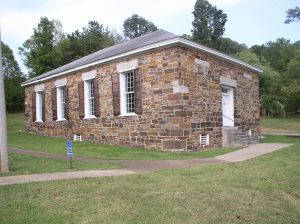
The Old Stone Church, Ringgold, GA
The Old Stone Church was built around 1850 with rock from the mountainside nearby. Its religious affiliation was Presbyterian, and the building was used as a place of worship until it was converted into a Civil War hospital. The building has undergone a restoration, and the original pews and original altar are still in place. Today, however, the building houses a Civil War museum that’s open to the public on Fridays, Saturdays, and Sundays from 1:00 p.m. to 5:00 p.m.
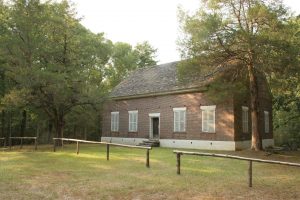
Kiokee Baptist Church, Appling, GA
Though Kiokee Baptist Church is not the oldest church building in Georgia, it does boast the longest-standing congregation in the state. The church was first started by pioneer preacher Daniel Marshall in 1772 near Kiokee Creek. This was after standing trial for spreading Christianity in the region. He was ordered to stop doing so. Instead, he continued in his pursuit of sharing the Good News with people in the south. The first church building—built by Marshall—was a Quaker-style log cabin, most likely 20 feet wide and 24 feet long, as were the customary measurements of the time. Marshall served as pastor to the congregation until his death in 1784. His son then served as pastor, as did his grandson. And Marshall left behind a 61-year-old pastoring legacy because of this.
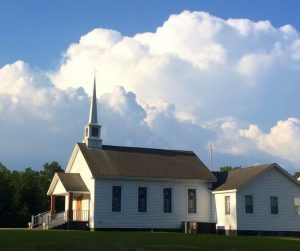
Mount Olivet Methodist Church, Hartwell, GA
This church sits in the city of Hartwell, Georgia, in Banks County. The church body was constituted in 1834 and first held services in a log cabin-style church that they built. Sadly, the church was destroyed in 1864 by General Sherman’s army. But the congregation was resilient and built again. Over the years, the church has suffered the effects of a fire and was even blown away by a powerful storm, but each time the church was destroyed, a new church was built. Beauty for ashes. Literally. Today, if you visit Mount Olivet Methodist Church, you’ll find the same sturdy pews that were built just after the Civil War.
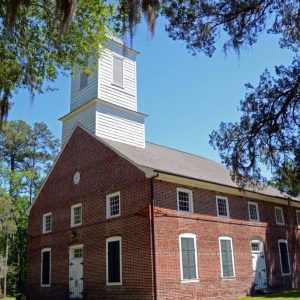
Jerusalem Evangelical Lutheran Church, Rincon, GA
Jerusalem Evangelical Lutheran Church is the oldest church building in the state of Georgia to still hold services. The structure was built in part using bricks of clay from the area. The fingerprints of those who built the church are forever on the bricks used to build the place of worship, and you can see them when you visit. The church was built around 1734 in Effingham County along the Savannah River near the city of Rincon in a settlement called New Ebenezer. The walls of this historic old church are a whopping 21 inches thick, and some of the original panes of glass are still in the windows today. The two bells at Jerusalem Evangelical Lutheran Church are still rung before every service. They were brought from Europe and are the oldest bells in the state—one was acquired in 1749; the other in 1752.
A sign at the church reads: “ENTER WITH REVERENCE / A Lutheran Church in continuous worship of God since 1734.”
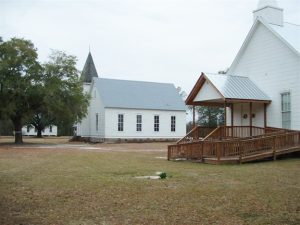
The three churches on Old Church Row, Louvale, GA
Along old Highway 27 in Stewart County stand three separate churches. The line of churches is endearingly referred to as “Old Church Row.” The area is a National Register-listed Historic District. Each church on the row has its own story, had its own congregation and was built on land purchased for the purpose of building a place of worship. The three churches are as follows:
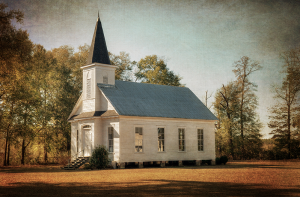
Antioch Primitive Baptist Church
This church building replaced a log cabin-style church that was built before the 1880s. The church that stands now was built in the mid-1880s. To this day, the floor is pristine—made of long narrow wood planks that draw the eye toward the chancel from which a pastor preached on Sundays. Just a few yards away stand two other houses of worship.
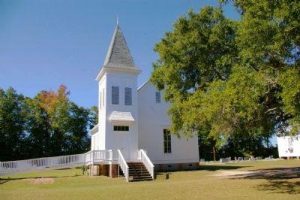
Marvin Methodist Church
This church was originally founded in 1830 in nearby Green Hill, Georgia. The owner of the land on which Antioch Primitive Baptist Church was built sold an acre of land to the congregation of Marvin Methodist Church, who in turn built a place of worship adjacent to the Antioch Church in 1900. The wood floors are made of a dark ash and the white walls of the building brighten up the space. The centerpiece of the church building is, of course, the chancel—the round platform from which the pastor speaks.
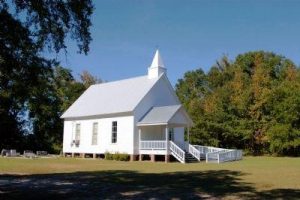
New Hope Baptist Church
New Hope Baptist Church is the smallest of the three churches on Church Row. The same owner who sold land to the congregation of Marvin Methodist sold a tract of land—almost an acre—to the New Hope congregation, which was founded in 1860. The church building you see today was built in 1901, only yards from the two other churches on the historic row.

